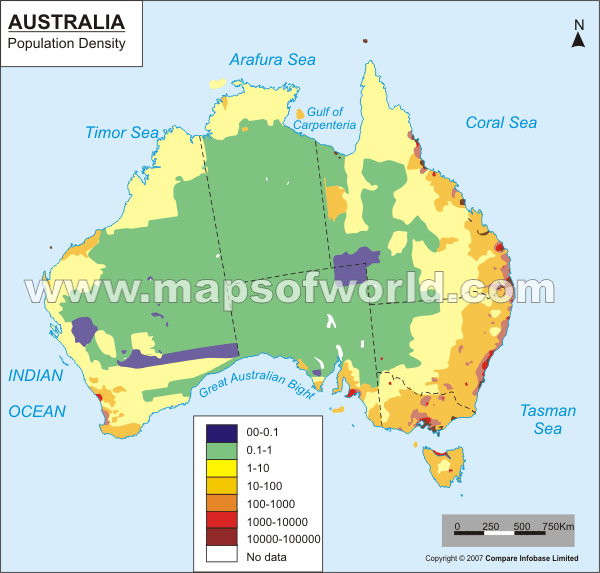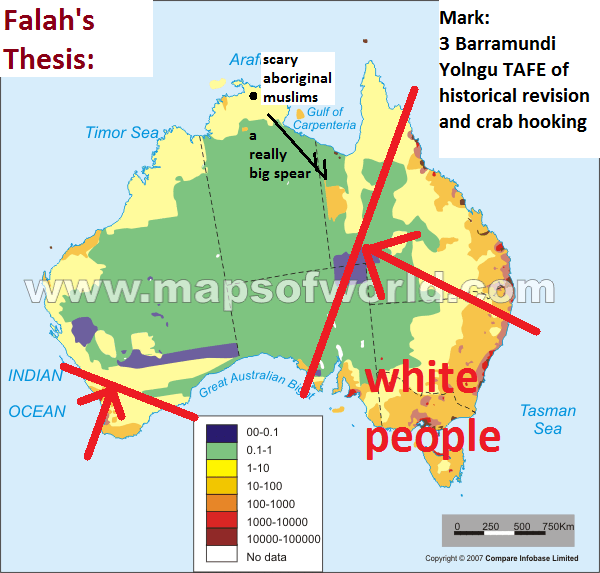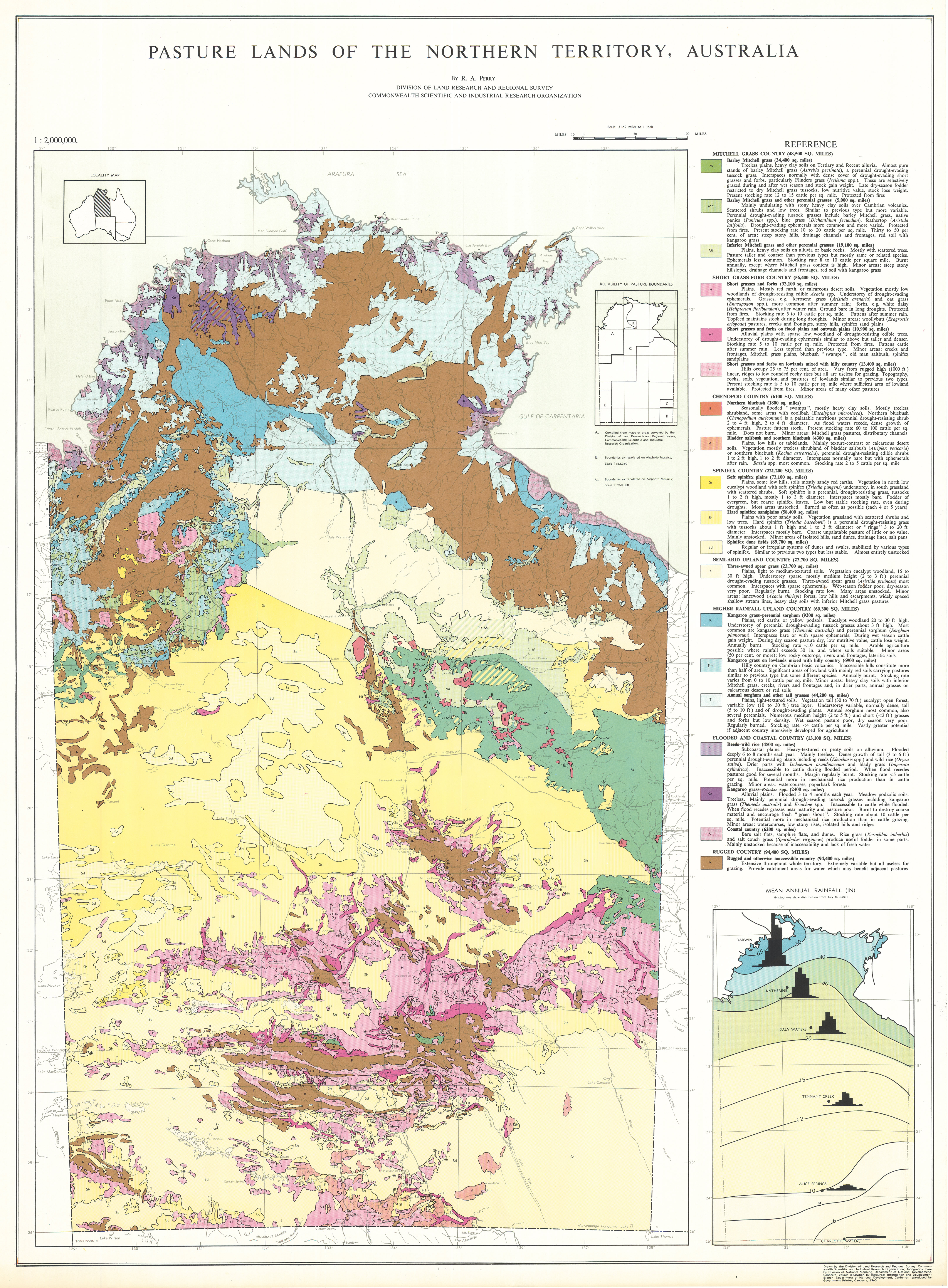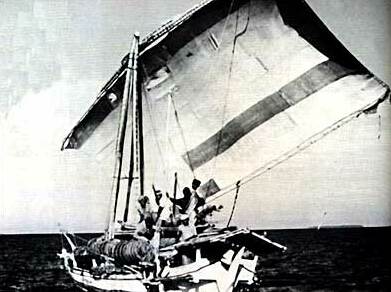The Macassans developed a sense of territorial rights by negotiating Aboriginal permission to use their coasts.
When Europeans arrogantly refused to negotiate with Indigenous people affected by Macassan trade, they knew that they must defend their lands.
Indigenous people in northern coastal areas visited by Macassans were prepared to fight invaders from the earliest instances, unlike their Southern counterparts whose timidity often allowed European settlers to gain a strong foothold that made resistance more difficult. Berndt and Berndt wrote of Aboriginal resistance to invaders in Arnhem Land: ‘the history and background of this contact had shown disruption and discord since the early days of European settlement, and when the Indonesian trading was halted the whole position became accentuated.’ In Eastern Arnhem Land, in particular, Aborigines kept up hostilities with intruders, with spasmodic fighting, spearing and massacres continuing into the twentieth century:
Quote:| Today we would call such a defence “guerrilla warfare”, and perhaps look upon the defenders as patriots. The Aborigines regarded the Europeans visiting this coast as intruders, violating their territorial rights; and when strangers interfered with their womenfolk, threatened them with guns, or encroached on their reserves they responded…1 |
|
The readiness of Aborigines in Arnhem Land to aggressively defend themselves against foreigners with harmful intentions is demonstrated in John Lort Stokes’ account of what happened when Arhem Landers came to trade with the British exploration ship the Beagle in 1842, and determined that the intentions of the British explorers was not peaceful. Stokes had set out in a dinghy to intercept their canoe, but he had psoitioned the dinghy between the Arnhem Landers canoe and the shore, cutting off their potential escape route. This was perceived as a hostile act:
Quote:One of them was a large square-headed fellow of ferocious aspect, whose countenance was lit up by a look of fierce revenge…I little thought that my pressing them would have so nearly led to fatal results…
A few days after my interview…with the natives, Mr. Fitzmaurice went ashore…when on the summit of the cliffs…suddenly appeared a large party of natives with poised and quivering spears, as if about immediately to deliver them. Stamping on the ground, and shaking their heads to and fro, they threw out their long shaggy locks in a circle, whilst their glaring eyes flashed with fury as they champed and spit out the ends of their long beards. They were evidently in earnest, and bent on mischief...The foremost of this party was recognised to be the ill-looking fellow, who left me in the canoe with a revengeful scowl upon his face. 2 |
|
John Lort Stokes wrote that one of the main causes of failure of European settlement in Australi's north-west coast was Aboriginal defence of the lands.
Stokes wrote of the decision to abandon the Raffles Bay settlement in 1829:
Quote:| …The causes which led to its breaking up, are thus succinctly given by Dr. [Thomas Braidwood] Wilson. "The alleged causes were: first, the unhealthiness of the climate; secondly, the hostility of the natives… When Port Essington was located, all these had to be suffered over again"3 |
|
From earliest British contact, the Aborigines in the Arnhem Land region gained a reputation of being prepared to fight for their land and wealth. Berndt and Berndt wrote of the reputation of the coastal Arnhem Landers:
Quote:| Europeans visiting this north coast, particularly in the east and north-east, were usually careful in their dealings with the Aborigines. Most of them were in the habit of going armed, since it was generally believed that the natives were “wild” people , ready on the least provocation to spear a stranger.4 |
|
Note that Europeans deemed the Arnhem Landers as "wild", yet Macassans had been peacefully trading and making cultural exchanges with the same people for centuries.
In 1875 a member of a gold prospecting party, wrote in his journal of his group’s fear that they would be attacked by Aborigines as they sailed around the north coast of Arnhem Land:
Quote:| We heard that these were the worst black people on the whole coast.5 |
|
Northern Territory Customs collector, Alfred Searcy, formed a similar opinion, writing in his journal:
Quote:| The black people also had to be reckoned with, for they have a bad name on this portion of the coast.6 |
|
Explorer, Matthew Flinders, also realised that the Indigenous people of Arnhem Land were not timidly going to allow invaders like those that the British had found in the south of Australia.
In 1803, when members of Flinders’ crew began cutting down vegetation without permission at Morgan Island, in Blue Mud Bay, a canoe carrying six warriors was quickly dispatched to defend their territory, and managed to spear one of the British before being dispersed by gunshot. Flinders was surprised at the hostility:
Quote:| It does not accord with the usually timid character of the natives of Terra Australis, to suppose the Indians came over from Isle Woodah for the purpose of making an attack; yet the circumstance of their being without women or children, - their following so briskly after Mr. Westall, - and advancing armed to the wooders, all imply that they rather sought than avoided a quarrel. I can account for this unusual conduct only by supposing, that they might have had…Asiatic visitors, of whom we had found so many traces, some almost in sight of this place.7 |
|
What Flinders seems unable or unwilling to comprehend is the possibility that the Asiatic visitors may have sought permission from the owners before chopping down trees, thus setting the benchmark for behaviour expected from foreigners.
In 1866 John McKinlay’s exploration party was attacked by a large group of Aborigines in Western Arnhem Land.
8 This was followed by the deaths of Mr Permain and Mr Boorodaile, who were were reportedly murdered by Aborigines whilst exploring the area near Port Essington in 1875,
9 and in 1898 at King River a pair of buffalo shooters, T. Moore and K Mackenzie, were killed.
10 In 1879 sea trepnager, E. O. Robinson returned from a trip to Darwin to his camp in Western Arnhem Land to find his partner Thomas Wingfield half buried nearby.
11 After several Europeans explorers and pastoralists had been attacked and in some cases killed in Arnhem Land during the 1870’ and 1880’s, a government report described the natives of northeast Arnhem Land as ‘numerous and dangerous.’
12 In 1896, the ship Red Gantlet logged an Aboriginal attack in Castlereagh Bay in northeast Arnhem Land, and later the ship was reported missing altogether.
13 A trepanger named Jim Campbell was also speared near the King River in 1913.
14 In 1908, Dr Cecil Strangman, Protector of Aborigines for the Northern Territory, wrote that the natives of the Goyder River area in Castlereagh Bay ‘have gained an unenviable distinction for treachery and hostility to Europeans.’
15 However, Strangman wrote that the Groote Eylandt natives had an even fiercer reputation: ‘I had been warned by Europeans that had previously visited this island that these natives were the worst and most hostile lot on the coast.’
16 1R Berndt & C Berndt, Arnhem Land: its history and its people, F. W. Cheshire, Melbourne, 1954.
2J L Stokes, Discoveries in Australia; with an account of the coasts and rivers explored and surveyed during the voyage of H.M.S. Beagle, in the years 1837-38-39-40-41-42-43, vol. II, T. and W. Boone, London, 1846
3Ibid
4Berndt & Berndt
5Journal of “Spence” kept on behalf of himself and Prospecting Party to Scott, Government Resident, Darwin, Northern Territory Incoming Correspondence
6A Searcy, In Northern Seas, W.K. Thomas, Adelaide, 1905.
7Flinders, M, A voyage to Terra Australis, vol. II, G.and W. Nicol, London, 1814.
8Berndt & Berndt
9Northern Territory Times and Gazette, 20 March 1875
10Northern Territory Times and Gazette, 16 December 1898
11Berndt & Berndt
12Government Resident, Half-Yearly Report on Northern Territory to December 31st 1885
13Berndt & Berndt
14The Argus, 9 July 1913
15Berndt & Berndt
16Ibid








































